Case history
Case history #1
A 6-year-old uncircumcised boy presents with parents to the emergency department and reports penile pain, swelling, and difficulty urinating. Physical examination reveals a swollen glans penis with a collar of swollen foreskin proximal to the glans penis. The remainder of the penis and genitalia are normal. [Figure caption and citation for the preceding image starts]: ParaphimosisFrom the collection of Nicol Corbin Bush, MD [Citation ends].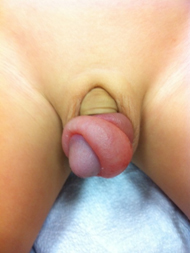
Case history #2
A 5-month-old boy presents with parents to his paediatrician amid concerns about genital hygiene and inability to retract the penile foreskin. On physical examination the urinary meatus cannot be visualised due to a non-retractile foreskin. [Figure caption and citation for the preceding image starts]: Pathological phimosis with cicatrixFrom the collection of Warren T. Snodgrass, MD [Citation ends].
Other presentations
Hypospadias is typically diagnosed at birth when the hallmark incomplete prepuce is visualised. Megameatus with intact prepuce (a mild variant of distal hypospadias) can occur with an intact prepuce, and is only noted at the time of circumcision or retraction of the prepuce at an older age. Congenital penile curvature and/or torsion is typically noted in the newborn period when the infant has a spontaneous erection, often with voiding. A forward or sideways penile bend is seen, sometimes with penoscrotal webbing and/or deficient ventral shaft skin. Less commonly, dorsal curvature is seen. Penile curvature may occur in conjunction with hypospadias, or as an isolated finding.
Concealed penis is typically seen in neonates or overweight pre-pubescent boys, when the pre-pubic fat pad is most prominent. It can also result from other causes of tissue swelling (e.g., large hydroceles and hernias). Adults may also present with cases of concealed penis, especially after weight gain.[4] The diagnosis is typically based on visual inspection followed by palpation to assess the true length of the penile corpora.
[Figure caption and citation for the preceding image starts]: Infant with distal hypospadias. The urethral meatus is located in the glans or distal shaft and prepuce is typically incompleteFrom the collection of Nicol Corbin Bush, MD [Citation ends]. [Figure caption and citation for the preceding image starts]: Infant with proximal hypospadias. The urethral meatus is located from the perineum to the proximal shaftFrom the collection of Nicol Corbin Bush, MD [Citation ends].
[Figure caption and citation for the preceding image starts]: Infant with proximal hypospadias. The urethral meatus is located from the perineum to the proximal shaftFrom the collection of Nicol Corbin Bush, MD [Citation ends]. [Figure caption and citation for the preceding image starts]: Congenital penile curvature (congenital chordee)From the collection of Nicol Corbin Bush, MD [Citation ends].
[Figure caption and citation for the preceding image starts]: Congenital penile curvature (congenital chordee)From the collection of Nicol Corbin Bush, MD [Citation ends].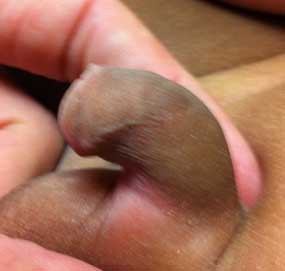 [Figure caption and citation for the preceding image starts]: Congenital buried penisFrom the collection of Nicol Corbin Bush, MD [Citation ends].
[Figure caption and citation for the preceding image starts]: Congenital buried penisFrom the collection of Nicol Corbin Bush, MD [Citation ends].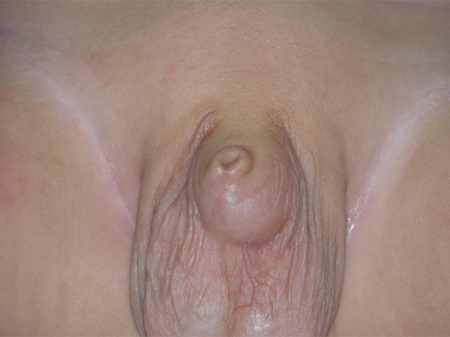 [Figure caption and citation for the preceding image starts]: Congenital buried penis: abundant inner preputial skin with paucity of shaft skinFrom the collection of Nicol Corbin Bush, MD [Citation ends].
[Figure caption and citation for the preceding image starts]: Congenital buried penis: abundant inner preputial skin with paucity of shaft skinFrom the collection of Nicol Corbin Bush, MD [Citation ends].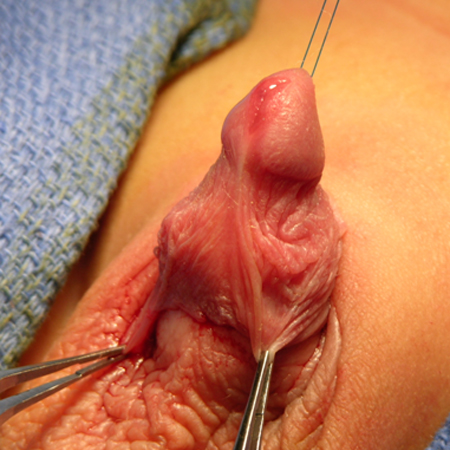 [Figure caption and citation for the preceding image starts]: Congenital buried penisFrom the collection of Warren T. Snodgrass, MD [Citation ends].
[Figure caption and citation for the preceding image starts]: Congenital buried penisFrom the collection of Warren T. Snodgrass, MD [Citation ends]. [Figure caption and citation for the preceding image starts]: Congenital buried penisFrom the collection of Nicol Corbin Bush, MD [Citation ends].
[Figure caption and citation for the preceding image starts]: Congenital buried penisFrom the collection of Nicol Corbin Bush, MD [Citation ends].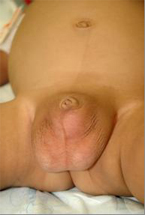
Use of this content is subject to our disclaimer